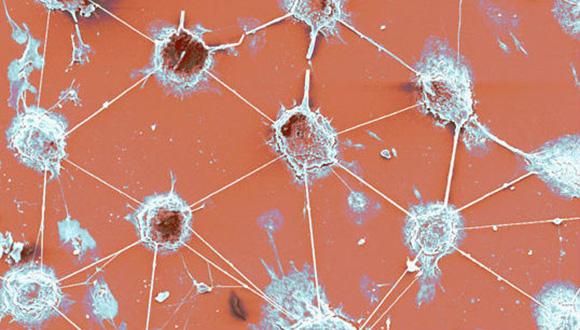Departmental Seminar - Materials Science and Engineering: Jennifer Lilia Marguerite Rupp
Prof. Dr. Jennifer L.M. Rupp, Electrochemical Materials Laboratory
Thomas Lord Assistant Professor of Materials Science and Engineering
Massachusetts Institute of Technology, MIT
Alternative Oxide Architectures for Ionic Memories and Neuromorphic Computing: Designing Defects and Carrier Motion
The next generation of information memories and neuromorphic computer logics in electronics rely largely on solving fundamental questions of mass and charge transport of oxygen ionic defects in materials and their structures. Here, understanding the defect kinetics in the solid state material building blocks and their interfaces with respect to lattice, charge carrier types and interfacial strains are the prerequisite to design new material properties beyond classic doping. Through this presentation basic theory1 and model experiments for solid state oxides their impedances and memristance2, electro-chemo-mechanics and lattice strain3-5 modulations is being discussed as a new route for tuning material and properties in ionic conducting oxide film structures up to new device prototypes based on resistive switching. Central are the making of new oxide film materials components, and manipulation of the charge carrier transfer and defect chemistry (based on ionic, electronic and protonic carriers)1-2, 5-6, which alter directly the resistive switching property and future computing performances. A careful study on the influence of microstructure and defect states vs. the materials` diffusion characteristics is in focus. For this, we suggest novel oxide heterostructure building blocks and show in-situ spectroscopic and microscopic techniques coupled with electrochemical micro-measurements to probe near order structural bond strength changes relative to ionic and electronic diffusion kinetics and the materials integration to new optimized device architectures and computing operation schemes.
1)Memristor Kinetics and Diffusion Characteristics for Mixed Anionic-Electronic SrTiO3-δ: The Memristor-based Cottrell Analysis Connecting Material to Device Performance
F Messerschmitt, M Kubicek, S Schweiger, JLM Rupp
Advanced Functional Materials, 24, 47, 7448 (2014)
2)Uncovering Two Competing Switching Mechanisms for Epitaxial and Ultra-Thin Strontium Titanate-based Resistive Switching Bits
M Kubicek, R Schmitt, F Messerschmitt, JLM Rupp
ACS Nano 9, 11, 10737 (2015)
3)Designing Strained Ionic Heterostructures for Resistive Swicthing Devices
S Schweiger, R Pfenninger, W Bowman, U Aschauer, JLM Rupp
Advanced Materials, in press (2016)
4) The Effect of Mechanical Twisting on Oxygen Ionic Transport in Solid State Energy Conversion Membranes
Y Shi, AH Bork, S Schweiger, JLM Rupp
Nature Materials, 14, 721 (2015)
5) A Micro-Dot Multilayer Oxide Device: Let’s Tune the Strain-Ionic Transport Interaction
S. Schweiger, M. Kubicek, F. Messerschmitt, C. Murer, J.L.M. Rupp
ACS Nano, 8, 5, 5032 (2014)
6) How does Moisture affect the Physical propert of Memristance for Anionic-Electronic Resistive Switching Memories?
F Messerschmitt, M Kubicek, JLM Rupp
Advanced Functional Materials, 25, 32, 5117 (2015)


